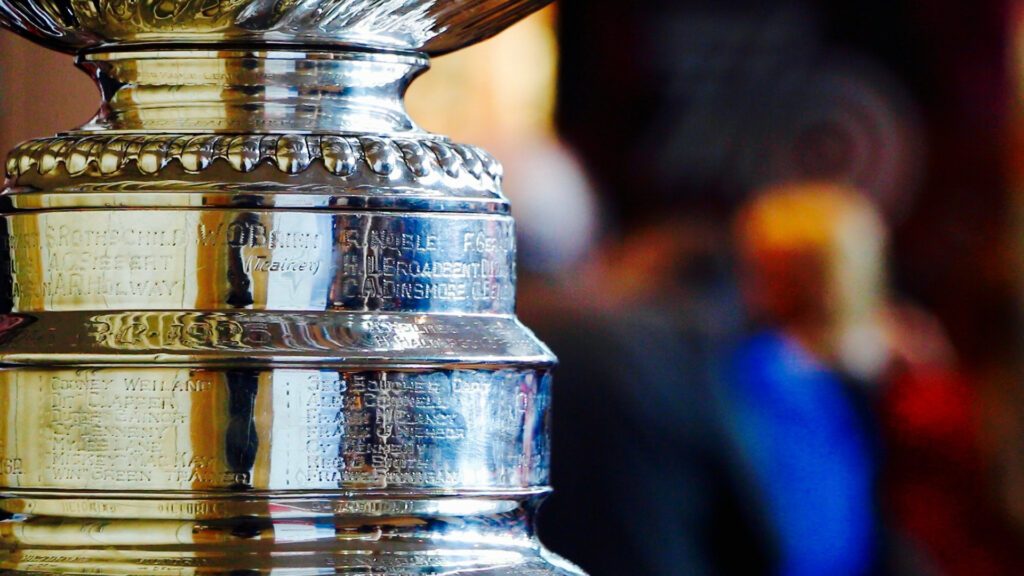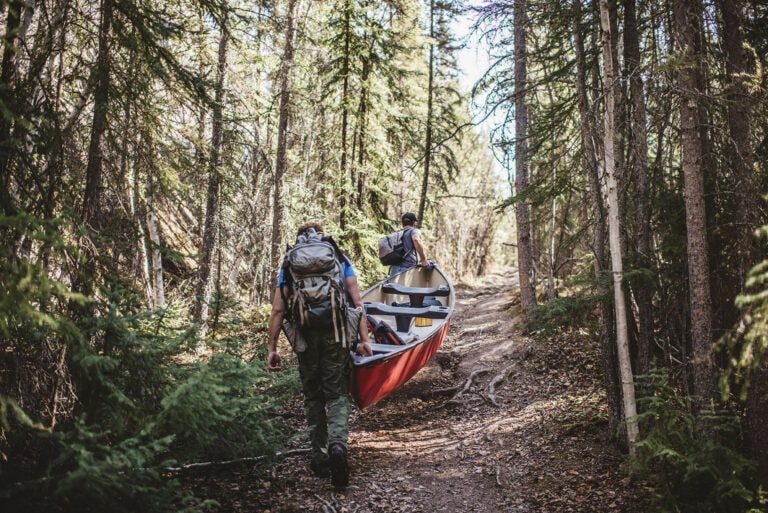On EDGE | ANALYSIS
Canada’s 2016 census may as well have begun at the NWT legislature on Saturday.
A pretty neat trick for counting a local population, it turns out, is to put the Stanley Cup in one corner of a large room and wait patiently.
Hundreds of Yellowknifers flocked to the cup on Saturday night as it ended a three-day tour of Nunavut and the Northwest Territories, organized by Ottawa-based northern children’s charity Project North.
The territory has a lot on its plate. Everyone knows it, everyone complains about it, but few people are prepared to fully educate themselves about what those who matter are doing.
You could also have seen the cup in any of Kugluktuk, Resolute, Arctic Bay, Pond Inlet, Igloolik and Cambridge Bay, alongside former NHL players Mark Napier and Lanny McDonald.
Napier had not quite mastered all his pronunciations by the time he regaled Yellowknife residents with tales from the tour on Saturday.
“Klug-Luk-Tuk, is that right?” He said, gamely taking a stab at Kugluktuk, before trying a second time: “Koogla-Tuk!”
McDonald added: “It was the greatest trip, to see the faces of all the kids…and not only the kids but the Elders, to see and touch the cup. It truly is magical.”
Just as magical as seeing the Legislative Assembly full of people. Which is a rarity.
Clearly, this is what you have to do to drum up a crowd in there — and all future sessions of the legislature must feature the Stanley Cup in the middle of the chamber as a homing beacon for locals. Come for the cup, stay for the territorial politics.
Empty seats
It’s unlikely to surprise you that barely anyone turns up to watch the legislature in session. The empty seats suggest it offers as much local interest as this year’s playoffs. However, you won’t have known for sure until now because you haven’t bothered to go, either.
And why would you?
If it’s anything like the legislature on television — which you watched, briefly, once, before pining for TV bingo and an episode of Heartland — then it’s a poor second to Anything Else At All when planning out your day. Plus you can rely on the media to inform you of the best bits.
Except you can’t.
Covering the legislature as a reporter is not as simple as it might seem. There is the main, televised session full of back-and-forth politicking, which is usually covered, and then more action later in the day — which often isn’t, because modern-day, overstretched newsrooms can only spare a reporter for so long.
If all the journalists depart the building by 3:30 p.m., as is often the case, that means nobody’s around to cover Committee of the Whole. Committee of the Whole is assembly shorthand for “everyone who was just in the room comes back and carries on, except the TV cameras aren’t rolling so we can stop grandstanding and get on with something worthwhile.”
Committee of the Whole does things like examine new legislation line-by-line or question ministers and their deputies on future plans. It is often far more revelatory and insightful than the previous 90 minutes, but it also lasts into the evening and goes into relatively granular detail on topics that can’t always be predicted ahead of time.
Sometimes, then, the most important developments of the day — for example, senior department officials defending planned expenditures to MLAs under intense questioning — take place in front of no members of the public and no journalists.
Assembly Night in Canada
Why so little interest? The chief reason for not being bothered is probably that it’s boring. And it can be. But then, so can hockey games, plays, books and opinion columns.
As with most things, it’s more interesting when you know what’s happening.
The legislature is a complex beast, but since the Stanley Cup got everyone into the building, let’s strain the analogy and break an average session down into three periods of action.
First period: Ministers make statements about the work the government is doing or in response to something topical. Let’s use March 3 as an example: on that day, statements were about the Arctic Winter Games, ways of improving transparency and accountability, affordable housing in communities, and a territorial mental health framework.
Then regular MLAs, on the other side of the room, make statements about issues they want to address. These can be local to their riding or territory-wide. On March 3, these ranged from land tenure in Tu Nedhe-Wiilideh to the Long John Jamboree, to the cost of living in Nunakput.
These statements provide a chance for the government to explain policy decisions while setting the scene for the questions to follow, with context and case studies for issues facing all corners of the territory.
Second period: Regular MLAs get the chance to directly question the ministers, usually with three or four questions each.
Sometimes, these little Q&As dissolve into a pleasant nothingness. But now and then you’ll see a minister getting pinned on a sensitive issue, possibly by multiple regular MLAs homing in on a single topic.
These are the cogs of public politics whirring: how well do MLAs get their points across? How well-informed are ministers on key issues? (Usually, but not always, they have an understanding of which questions are coming in order to be better-briefed.)
Third period: Documents are tabled and motions debated. The documents are stored on this quiet corner of the assembly’s website — they can be pretty meaty tomes but they’re often packed with data and analysis to help explain what’s going on around you. On March 3, one such document was the government’s mandate — in other words, what your leaders plan to do over the next four years. Long, but important.
The motions allow MLAs to each have a short say on a given topic before a vote is held. Motions can also instruct the government to take certain courses of action. On March 3, a motion was carried requesting the development of an action plan on disabilities. Committee of the Whole follows after a short break.
If you watch all of this — even once — you’ll know much more about the interplay between ministers and regular MLAs, how issues are raised in public, who’s taking things seriously and appearing competent (and who isn’t), and maybe how you might get the spotlight on issues you care about.
Alligators in the room
The assembly is back in session at the end of this month, and that will last almost the entirety of June (there’s a calendar here). At least once in that time, I would like you to pretend the Stanley Cup is all alone and unguarded at the legislature, and is beckoning you with its siren song.
When you turn up and discover it is not in actual fact there, stay anyway. Watch the 90-minute back-and-forth (from 1:30 p.m. Monday to Thursday,10 a.m. Friday), go and get a snack, and then come back for Committee of the Whole. During the dull moments — there may be some — you can tweet about it. Or Instagram it. Or Snapchat it.
By doing this you will know a darned sight more about your government than if you waited for a link to appear on Facebook and waded into the comments alongside 50 other people who also didn’t go and didn’t hear all of what was said.
“Fine,” you say, “but I have a job. I work weekdays. This is not happening.” Which is understandable. So let my last word be for OpenNWT, a free, volunteer-run website that takes the transcripts from each day at the legislature and makes them easy to read.
OpenNWT has nothing to do with the territorial government, beyond making use of the official transcripts produced by the assembly. If you can’t make it in person, this is the best way to digest the daily goings-on and is completely searchable. The search is great fun: try typing in ‘tsunami.’ Or ‘elephant in the room.’ Or ‘alligators.’
But mostly, use it for its fully indexed, well-presented and comprehensive record of what your politicians are saying, produced daily. If you can’t be there to hear it in person, take 15 minutes to browse OpenNWT the next day. Maybe even write to your MLA about what was said. Every one of them claims to support public engagement, so it won’t hurt to test them out on that.
The territory has a lot on its plate. Everyone knows it, everyone complains about it, but few people are prepared to fully educate themselves about what those who matter are doing. When it comes to what’s happening at the legislature, don’t just turn up for the cup.






